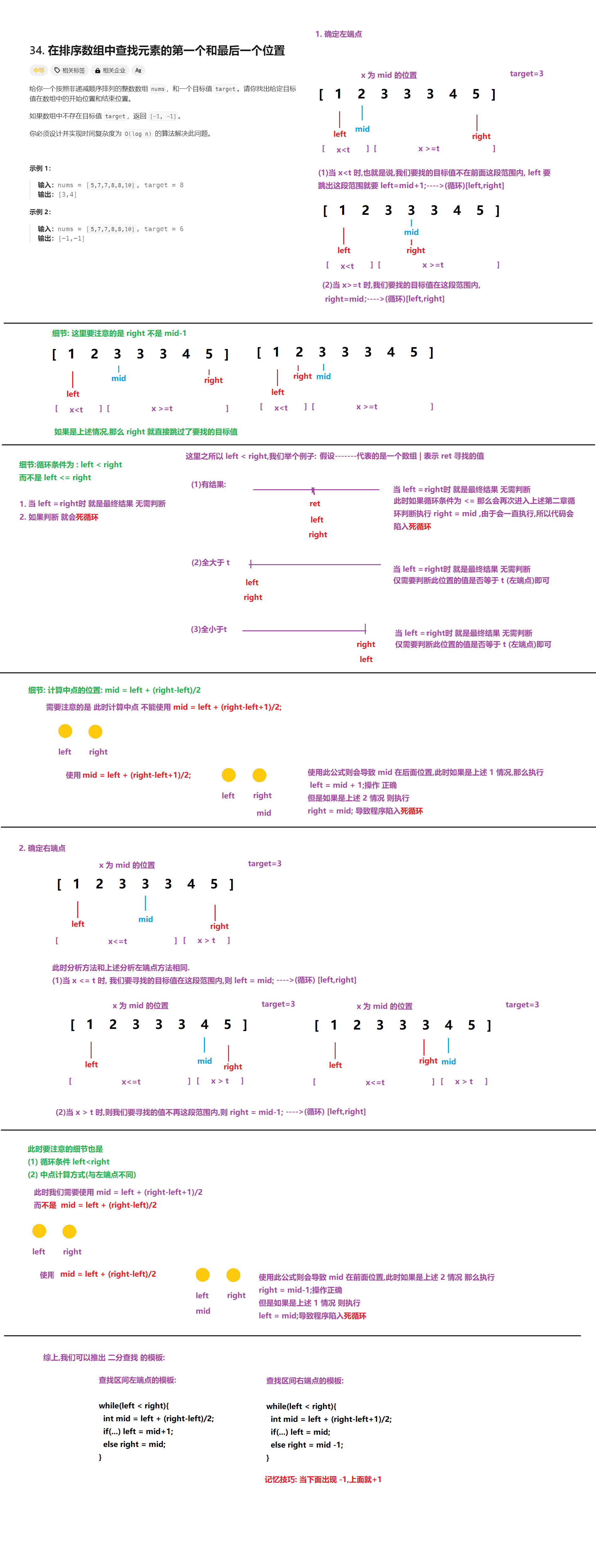xxxflower
作者相关精选
【优选算法】专题三:二分查找 --- 34. 在排序数组中查找元素的第一个和最后一个位置
前往小程序,Get更优阅读体验!
立即前往
【优选算法】专题三:二分查找 --- 34. 在排序数组中查找元素的第一个和最后一个位置
xxxflower
发布于 2024-01-06 02:00:19
发布于 2024-01-06 02:00:19
11600
代码可运行
举报
运行总次数:0
代码可运行
从今天开始,xxxflower 带着小伙伴们一起学习算法 ~ 今天我们要写的题目是: 34. 在排序数组中查找元素的第一个和最后一个位置 以下是题目的详细解析:

代码语言:javascript
代码运行次数:0
运行
AI代码解释
复制
class Solution {
public int[] searchRange(int[] nums, int target) {
// 判断数组为空的情况下返回-1,-1
int[] ret = new int[2];
ret[0] = ret[1] = -1;
if (nums.length == 0) return ret;
// 判断左端点
int left = 0,right = nums.length -1;
while(left < right){
int mid = left+(right-left)/2;
if(nums[mid] < target) left = mid + 1;
else right = mid;
}
// 判断是否有结果
if(nums[left] != target) return ret;
else ret[0] = left;
// 判断右端点
left = 0;right = nums.length -1 ;
while(left < right){
int mid = left+(right-left+1)/2;
if(nums[mid] <= target) left = mid;
else right = mid -1;
}
ret[1] = left;
return ret;
}
}
本文参与 腾讯云自媒体同步曝光计划,分享自作者个人站点/博客。
原始发表:2024-01-05,如有侵权请联系 cloudcommunity@tencent.com 删除
评论
登录后参与评论
暂无评论
登录 后参与评论
推荐阅读
相关推荐
php-fpm Remote Code Execution 分析(CVE-2019-11043)
更多 >领券
腾讯云开发者

扫码关注腾讯云开发者
领取腾讯云代金券
Copyright © 2013 - 2025 Tencent Cloud. All Rights Reserved. 腾讯云 版权所有
深圳市腾讯计算机系统有限公司 ICP备案/许可证号:粤B2-20090059 深公网安备号 44030502008569
腾讯云计算(北京)有限责任公司 京ICP证150476号 | 京ICP备11018762号 | 京公网安备号11010802020287
Copyright © 2013 - 2025 Tencent Cloud.
All Rights Reserved. 腾讯云 版权所有
登录 后参与评论
7







![[漏洞预警]PHP-FPM在Nginx的特定环境下的任意代码执行漏洞](https://ask.qcloudimg.com/http-save/yehe-4029520/xhhhf9je8n.jpeg)




